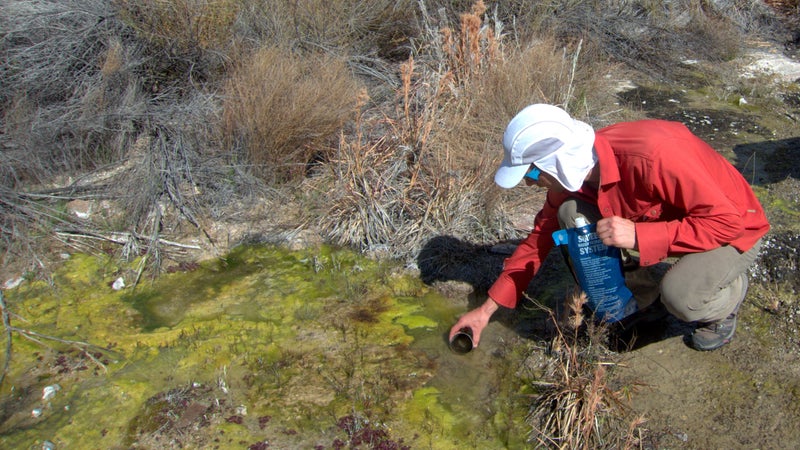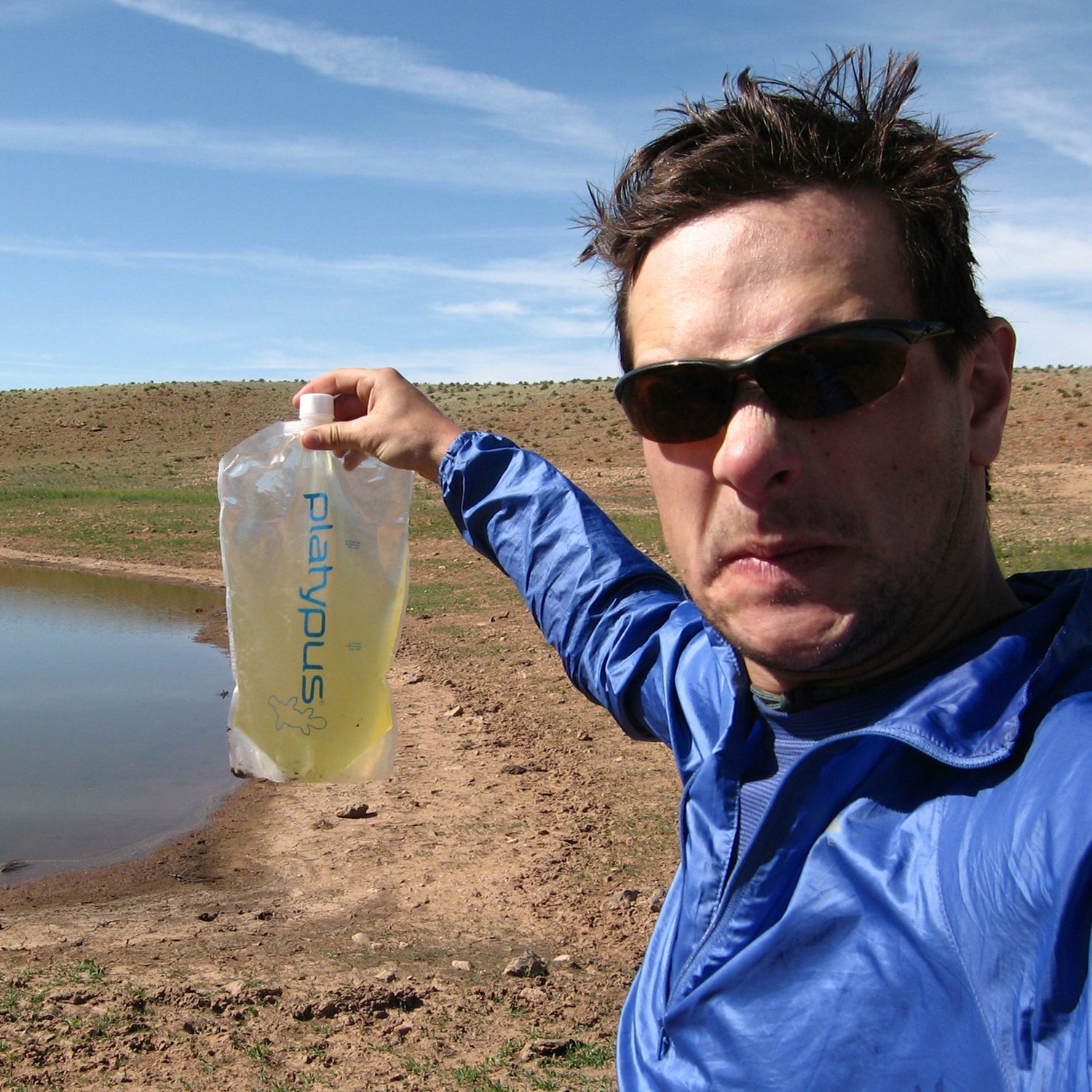Last month, there was a healthy online debate over the true risk of drinking water from backcountry sources without purifying it. I appreciate that Slate's  brought up the topic and agree that many sources are safe to drink without treatment. But when it comes to sound advice to actually follow, you're better off listening to Wes Siler and , who argue: 
-
ItÔÇÖs difficult to be certain of the contamination risk;┬á
-
Waterborne cooties can be uncomfortable (understatement); 
-
So, as a general rule of thumb, just purify it.
That said, while they say to practice what you preach, IÔÇÖll be honest: I do recommend that you purify backcountry water sources, but I generally do not. That's because┬ánormally┬áI hike off-trail and in low-use corners of the Colorado Rockies and High SierraÔÇöat the headwaters of the Colorado and San Joaquin RiversÔÇöwhere the water quality tends to be┬átop-shelf. I minimize the risk even further by being very selective about the exact sources from which I drink. When I backpack in dry places, like southern Utah, or in high-use areas, like the Appalachians, the rules of the game change.┬á
Before drinking unpurified backcountry water, I consider lots of factors. My ultimate decision is not based on a scoring system (e.g. ÔÇťThree strikes and youÔÇÖre out.ÔÇŁ), but rather a holistic assessment of┬áquality and risk. If I deem the risk acceptably low, IÔÇÖll go for it. If┬áthe risk is too high, IÔÇÖll bypass the source or purify it. Which gets me to the┬áinstructional knowledge that was left out of the February debate:┬á
- How to effectively purify water sources in the backcountry; and,
-
How to assess water quality before drinking it unpurified.
IÔÇÖm generally competent in explaining the “how to's” of backpacking, so I'll┬átry to fill this gap. For purification methods, read , which is pulled mostly from my book, . In this post, I'll focus on the second topic.
(And before reading any further, please note that┬áI have no academic training in this subject matter, and my approach is based entirely on personal experience, common sense, and a laymanÔÇÖs understanding of contaminants. So far, itÔÇÖs worked out pretty well for me. You have to decide for yourself whether that's enough for you.)
#1. What is the distance to the source?
Water quality will typically be best at its source, like where it gurgles out of the ground or drips from a snowfield. Here, it is least likely to carry harmful pathogens like giardia or E. coli, or pollutants like heavy metals or pesticides. When I can, I'll hike uphill to the highest possible collection pointÔÇöthe top pool or pour-over, or at least beyond the ÔÇťconvenientÔÇŁ spot that everyone else is using.
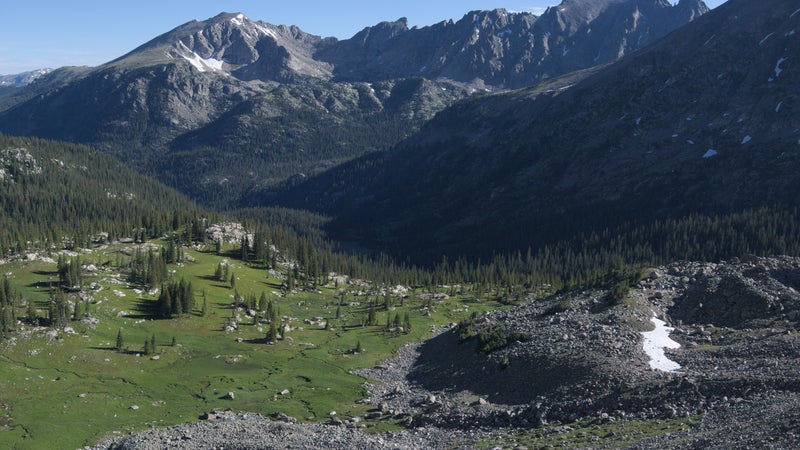
#2. How much poop is upstream?
Most pathogens are transmitted by the fecal-to-oral route. Read: the poop of an infected carrier gets into the water and eventually into your water bottle. So if I suspect there are animalsÔÇöfrom elk to cows to humansÔÇöupstream of my water source, then I purify.┬á
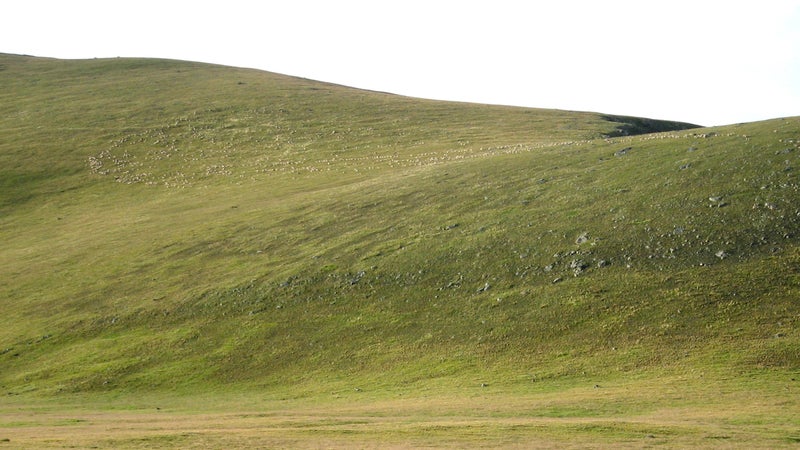
#3. WhatÔÇÖs the volume?
In this context, the solution to pollution really is dilutionÔÇöa water source with a low concentration of contaminants poses low risk. IÔÇÖm certain that many of the creeks and lakes in the Colorado Rockies and High Sierra test positive for pathogens. But the amounts are so low that IÔÇÖd have to drink an implausible amount of water (say┬á10 gallons in 24 hours) before ingesting┬áa dangerous dose.┬á
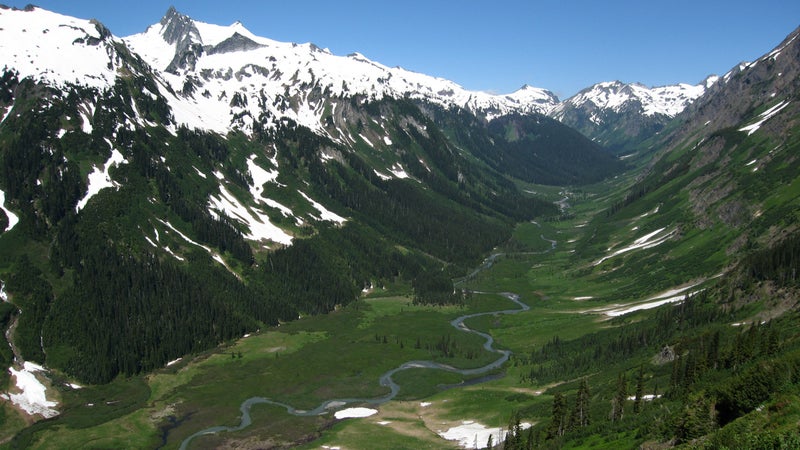
#4. Is it flowing or stagnant?
You would think that a flowing water source would be better than a stagnant one: the flowing source is constantly flushed, whereas a stagnant source could be a one-way collection site for contaminants.
Yet flowing sources are not necessarily better: they can carry upstream contaminants directly into my water bottle. That's why I'll also drink unpurified water from lakes and potholes, with a caveat: I take water from the top few inches, which get blasted with UV light, a proven purification method.
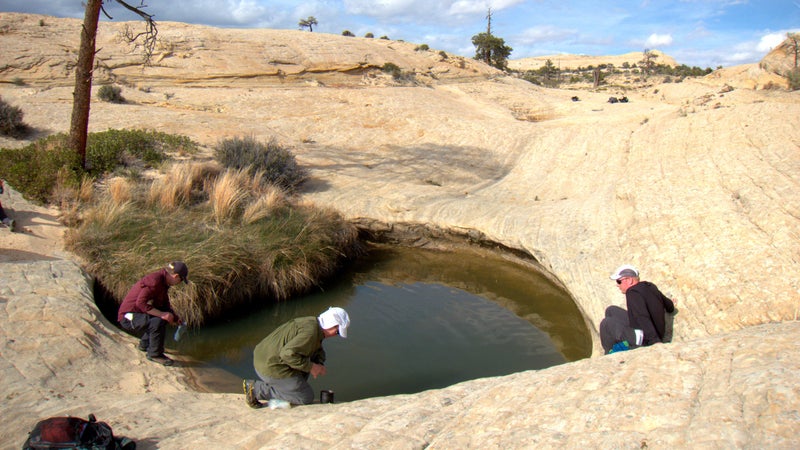
#5. Is it crystal clear?
Turbid water is a bad sign. Microbes tend to burrow into sediment and other floaties, and the effectiveness of some purification methods (notably, chemicals and UV light) are compromised.
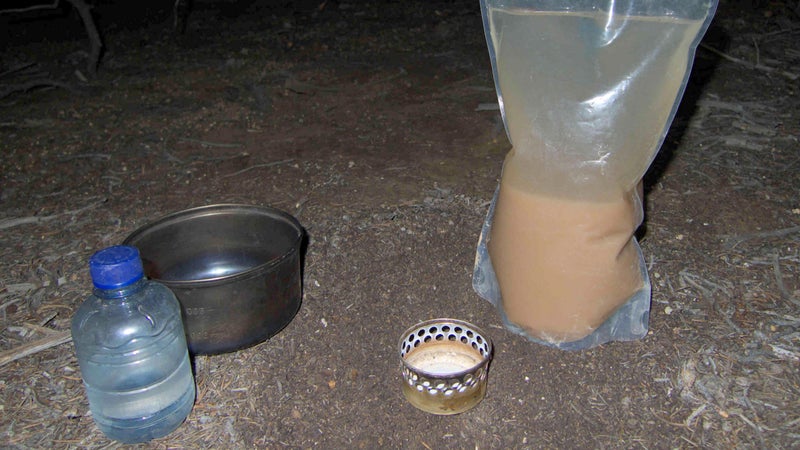
#6. What does it look, smell, and taste like?
I use my senses. If I see nasty-looking algae, I purify it. If I smell cow shit, I purify it. If I taste heavy metals, I filter it, or forgo┬áit if IÔÇÖm not carrying a filter that extracts heavy metals.
This is just common sense.
